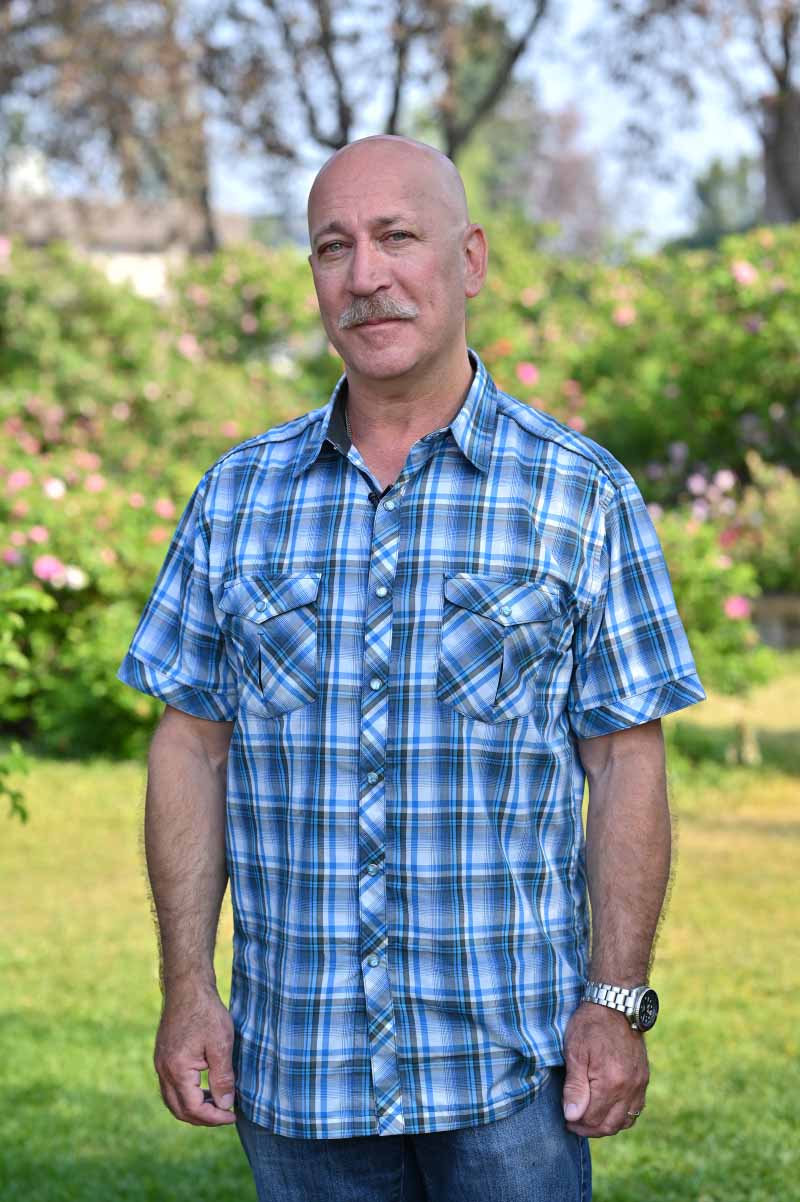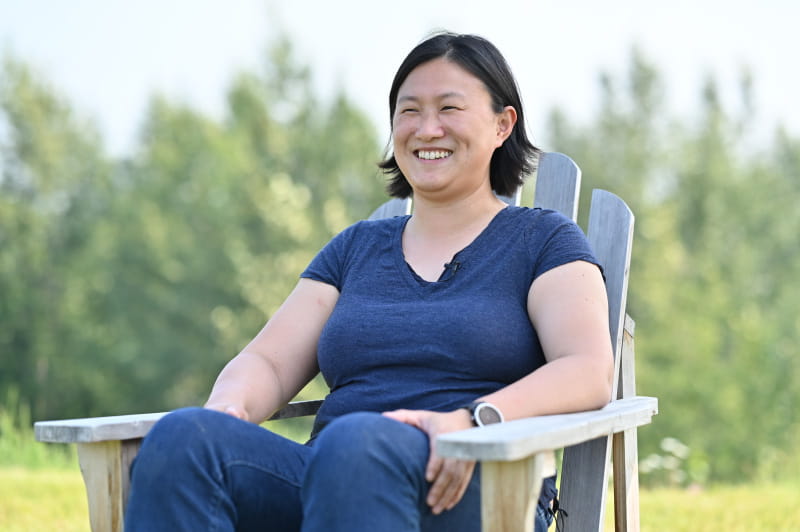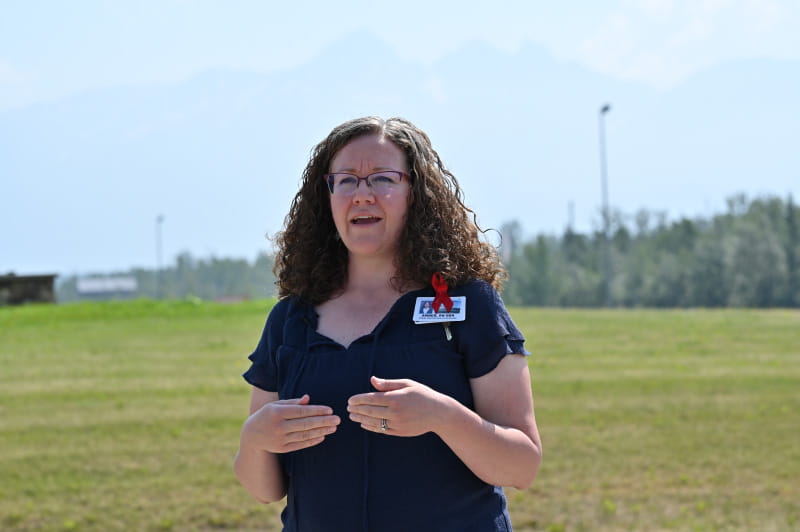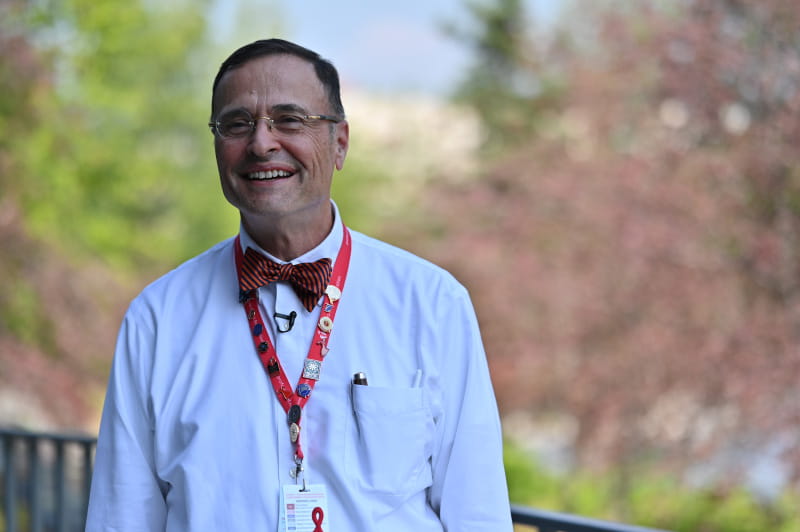The story of health care in Alaska told through the tales of 5 residents
By Jaime Aron, American Heart Association News

FAIRBANKS, Alaska – Born and raised in Fairbanks, Matthew Kuhns headed to the Lower 48 for college. After getting his degree in Pennsylvania, he wound up in Oregon, married to a local. He talked her into giving his hometown a try. Their family is in Year 9 of what was supposed to be a five-year stay.
Mike Plotnick grew up in Juneau but sought something different – really different – for college. Hawaii was great, but he returned to the Juneau area for most of his adult life.
Then there are folks such as nurse Amber Simonetti, Dr. Lucy He and Dr. Brian Trimble. Work brought them to Alaska. Everything about the place has kept them there.
Everyone in this random collection shares a belief that's typical among residents of the 49th state: Living here is challenging, but it's absolutely worth it.
"I think one of the true things about Alaska and Alaskans is that they are here because they want to be here," He said.
Plotnick is a heart attack survivor. The rest are or were caregivers. American Heart Association News spent time with each of them while reporting a series on health in rural America.
The following vignettes offer a glimpse into who each is, some of their personal or professional challenges and why they're proud to call Alaska home.
(VIDEO: In Alaska, the challenges of health care are at their most extreme)
The survivor
Mike Plotnick began skiing at such a young age that he sometimes skied the quarter mile to and from elementary school.
To this day, his fondest memories involve gliding over snow and ice, powered only by his arms, legs and gravity.
"Nordic, Alpine, cross-country and back-country skiing is a lifelong passion," he said.
In 1997, he and his wife, Judy, moved in to their "dream house" on Douglas Island, a neighborhood in Juneau. Part of what made it great was the proximity to Eaglecrest Ski Area. He soared across those slopes more often after taking early retirement in 2017.
In 2020 – when Mike was 60 and very fit, although with a family history of heart problems – he was cutting logs on his property when he felt lightheaded. A trip to the emergency room confirmed his worst fear. He was having a heart attack.
Then his heart stopped. A cardiac arrest.
Caregivers revived him. But they couldn't clear the blockage in his heart. He needed a cardiac catheterization procedure to insert a stent. Although Juneau is the capital, it has no cath lab. A medevac (medical evacuation) airplane flew him to Anchorage. The flight took almost 1 1/2 hours.
Everything went smoothly. So did the next conversation with his wife.
"We've got to move," Judy said.
"We're out of there," Mike said.

Goodbye, dream house. Goodbye, Eaglecrest. They relocated to Anchorage to be closer to whatever health care they may need.
Mike later heard about a guy he knew in Juneau, another fit man of the same age who endured a similar ordeal: Heart attack, cardiac arrest, medevac to Anchorage. Difference is, the other guy died.
"Every day," Mike said, "I wake up and know how fortunate I am."
The neurosurgeon
After earning a degree in biomedical engineering, Lucy He decided to shift gears.
Her new goal built off advancements in biomedical engineering: She wanted to both come up with new treatments for cancer and deliver them to patients. So off she went to medical school.
Except, when her specialized training began, she realized that wasn't her calling either.
Nearing the deadline to pick a specialty, He didn't like any of her options. Then she started a neurosurgery rotation.
Once again, she found a field enjoying a breakthrough. Endovascular neurosurgeons were fixing problems within the brain, neck and spine without cutting into those areas.
This, she knew right away, was where she belonged. Really, this time.

During her training at Vanderbilt University Medical Center in Nashville, Tennessee, a neurosurgery group in Alaska was looking for someone with her skill set. A friend of a friend recommended her.
"I admittedly took this interview because I wanted a free trip to Alaska," He said, laughing. "Then I came up here and thought it was a very unique place. Obviously, naturally, it's very beautiful. But, honestly, from a health care standpoint, I felt like you could really make an impact for patients here."
Her hiring was such a big deal that her practice put out a news release. It declared that stroke or aneurysm patients who previously would've been flown to Seattle could now be treated in Anchorage.
The care coordinator
Standing outside Mat-Su Regional Medical Center, Amber Simonetti laughed when asked why she settled in Alaska.
"Look around," she said.
The hospital is in Palmer, a city of about 6,000 residents that's a 45-minute drive from Anchorage. The snow-capped mountains of Chugach State Park loomed in the distance. A nearby waterway spills into the Gulf of Alaska.
"That's a large reason why I became an Alaskan – the hunting, the fishing, the beautiful scenery," she said.
When Simonetti was young, she cared for her grandparents. She decided to make a career of it. She and her husband became traveling nurses to see the country. They arrived in Alaska 11 years ago.
She worked as a registered nurse in an Anchorage hospital for about five years. Then she became Mat-Su's coordinator of chest pain and stroke care. The change took her from treating individual patients to improving the system of care for all patients.

Her job also involves community education, such as teaching people to recognize the signs and symptoms of a heart attack and stroke, and encouraging them to call 911 if they spot them. The challenge, Simonetti said, is that "Alaskans are proud, and we are fiercely independent and don't generally like to ask for help."
Her team devised a way to use that to their advantage.
Their pitch starts by saying the sooner someone calls for help, the more likely they are to make a fast, full recovery. "That way," she tells them, "you can preserve your independence and the quality of life that you love, which is why you're an Alaskan."
The tribal health stroke specialist
As an undergraduate at the University of Nevada in Reno, Brian Trimble landed a job in the neurology department of the medical school.
His main duty involved attaching electrodes to a person's scalp so they could undergo a test called an electroencephalogram, or EEG. It indicated whether the patient had cognitive issues.
Over three years, Trimble learned so much that when he entered med school, he had a head start in neurology. Enjoying it, he continued his training at the University of Washington. What he liked most was living in Seattle.
"Living in a place where I could just go out my back door and enjoy the wilderness was a boyhood dream come true," he said.

So, imagine how happy Trimble is to live in Anchorage.
He arrived in 1989 as a staff neurologist at the Alaska Native Tribal Health Consortium. He did so as a commissioned officer with the U.S. Public Health Service. Many of his colleagues arrived the same way.
"Most physicians that have worked here a long time have a love for global health and for reaching out to underserved populations," he said. "It's very, very rewarding. Alaska's an amazing place and Alaska Natives are amazing people."
The flying lifesaver
Above the dresser in his bedroom, Matthew Kuhns keeps a map of Alaska. It's filled with about 50 map tacks. Each ball-headed pin represents a runway he's flown into as a critical care nurse for LifeMed Alaska, an air ambulance service.
"I've gone to some pretty far-flung locations," he said. Among his most recent additions is Kivalina, a town on the northwest coast that's only about 240 miles from Russia's coast.
When his office gets a call for help, the crew (typically, a critical care nurse and a critical care paramedic) get ready while the pilot (or pilots) determine whether the trip is safe. Pilots are intentionally given no information except the destination.
Why? Because if he or she knew the trip was for something like saving a child, they may downplay weather risks.
One of Kuhns' most memorable calls was one of his first. It involved a flight to the treacherous Anaktuvuk Pass for – of all things – a plane crash. After his plane landed, the bad weather worsened. Other planes couldn't land, leaving only him and his partner to deliver all the care.

Another time, he flew to Hughes (population 85) in the dead of winter, needing to reach a man having a heart attack. Gear and people were loaded onto dog sleds for a three-quarter-mile trek in dark and snow. The sled ride back to the plane included carefully hauling the patient inside a specially made down sleeping bag that kept everything warm: the man, monitors and, crucially, fluid lines.
"Those are fun challenges," Kuhns said. "We never want a bad situation, but those are the ones that challenge us as critical care providers."
American Heart Association News sent reporters to five states to cover rural health challenges, and how people in rural America are working to overcome them.





